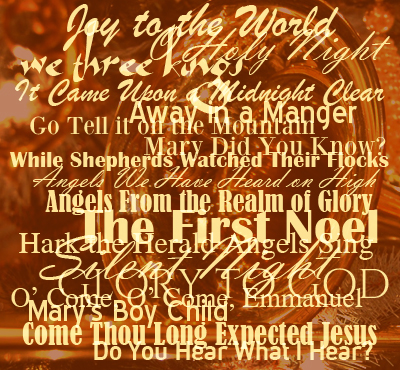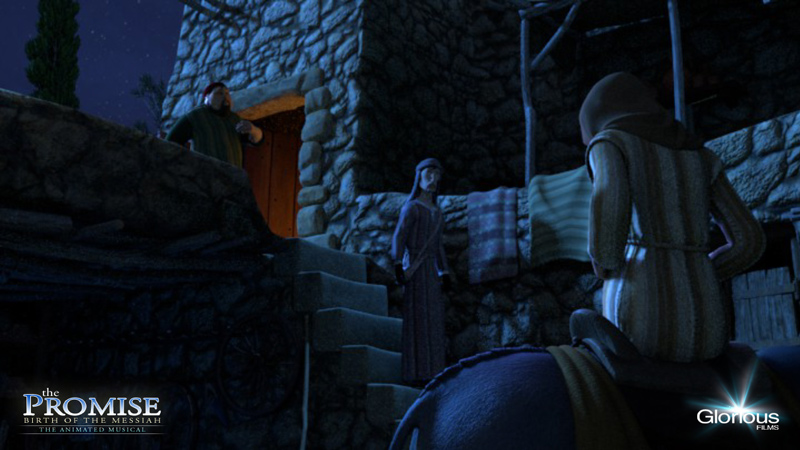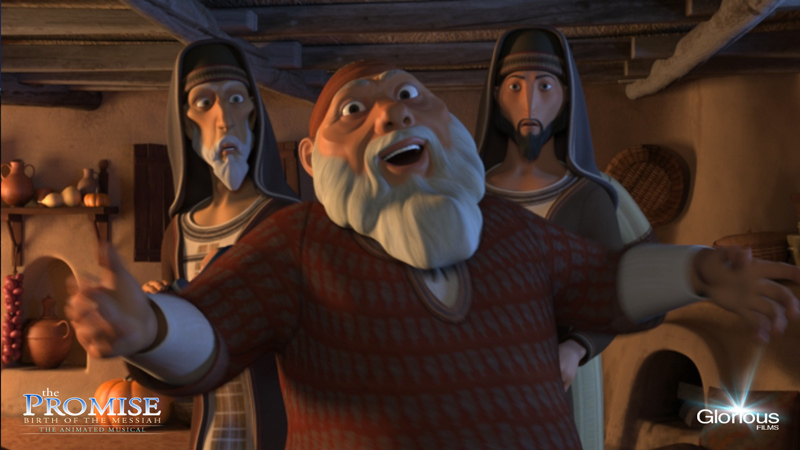Known as the Magnificat, Mary’s song of joy draws heavily from the Old Testament to show how her son will fulfill many of God’s promises.
Author Archives: Todd Shaffer
How Do Our Christmas Carols Stack Up to the Songs of the Nativity?
Music plays a significant role in our holiday celebrations, yet our repertoire of Christmas carols neglect a monumental portion of the original Christmas songs.
This is the second in a series of blog posts about the songs of the nativity story found in the Gospel of Luke. Click here to read the first post.
In the first post of this series we looked at the surprising reality that our annual Christmas celebrations largely overlook the four original songs of Luke’s nativity story. What are these original nativity songs? They are (with their Latin title in parens:)
- Mary’s song of praise (the Magnificat)
- Zechariah’s blessing (the Benedictus)
- The angelic birth announcement (Gloria in Excelsis Deo)
- Simeon’s blessing (Nunc Dimittis)
 If you’re scratching your head, you’re in a large company. Most Christian’s have no idea these biblical songs exist. Yet, it wasn’t always like that. Throughout church history these four songs played a substantial part of the annual church liturgy as canticles and vespers in the Catholic, Eastern Orthodox, Lutheran and Anglican churches. The rest of us have ignored them.
If you’re scratching your head, you’re in a large company. Most Christian’s have no idea these biblical songs exist. Yet, it wasn’t always like that. Throughout church history these four songs played a substantial part of the annual church liturgy as canticles and vespers in the Catholic, Eastern Orthodox, Lutheran and Anglican churches. The rest of us have ignored them.
You might be inclined to protest, “Surely, we have Christmas carols that deal with these songs!” I was curious too, so my colleague and I took 24 of the most popular Christmas carols that we sing in church Christmas services year after year, and we examined them, line-by-line, and compared them to Luke’s four nativity songs.
What did we find? Do our Christmas carols engage with the content of Luke’s nativity songs? Yes — to the tune of less than 5%. More than 95% of our Christmas carols focus only on the story of the nativity or the angelic birth announcement. Of the less-than-5% that do, their references are cursory or oblique in manner. These brave carols are:
- Come Thou Long Expected Jesus
- O’ Come, O’ Come, Emmanuel
- Angels We Have Heard On High
- Hark the Herald Angels Sing
- Angels from the Realm of Glory
There is nothing wrong with carols that focus on the birth story or the angelic announcement. These are wonderful events that are worthy of our rejoicing. But, as part of our annual Christmas repertoire, we should be concerned by what is lacking in our celebrations. In our collection of carols Mary’s song of joy is referenced by two songs, Zechariah’s blessing is referenced by three, and Simeon’s blessing is referenced by one.
Remember A Charlie Brown Christmas when Charlie Brown buys the saddest Christmas tree for the Christmas play? The tree is bare of limbs, dropping needles, and lacks the strength to bear the weight of one ornament. That’s us. We’re Charlie Brown, and our Christmas celebrations that overlook these songs is our sad little tree that is theologically spartan and biblically narrow. What is it that we celebrate about the birth of Christ? We celebrate the incarnation, Emmanuel “God with us,” the miraculous conception, a fulfill promise, the love of God for mankind, and the humility of his coming — all great things, but like Charlie Brown’s Christmas tree, it lacks the fullness of the luster that Luke shows it to be.
These four nativity songs cohere together as one of the most monumental portraits of Christ and his redemptive work found in Scripture. These dazzling songs help connect Christ and the New Covenant to the Old Testament. There are a wealth of treasures we miss that are worthy of our praise and festive celebrations. And it will take work, not only to give ear to these songs, but to wrestle to understand the Old Testament language, pictures and concepts that they draw from.
The Promise was made to be a starting point in the recovery these songs. And over the next four weeks I will be writing posts that focus on key portions of each of these songs that should be incorporated into our Christmas celebrations.
To read the previous post click here. To read the following post click here.
Why is The Promise a Musical?
What was the motivation behind making an animated musical of the nativity story? Watch to find out.
The Musical That Changed The World
After 400 years of silence, God opens his mouth in song, and the story that unfolds is a musical performance that turns the world upside down.
This is the first in a series of blog posts about the songs of the nativity story found in the Gospel of Luke.
Imagine taking your family to see a new production of The Wizard of Oz. Twenty minutes into the show you realize there are no songs. There is no “We’re Off To See The Wizard.” The Scarecrow doesn’t sing, “If I Only Had a Brain,” and Dorothy never sings, “Somewhere Over the Rainbow.” What would you think? Imagine the row this would cause in the press. This remake of The Wizard of Oz would quickly melt away like the Wicked Witch of the West.
Can you imagine a Christmas season without any Christmas music? Though some would love this, imagine how strange it would feel to experience an entire Christmas season in a town lavishly decorated Christmas lights, decorations and eggnog lattes, without so much as a Christmas themed bumper on the radio. You might begin to suspect that you’re on an episode of The Twilight Zone where the Grinch managed to steal the music from Christmas.
What may surprise you is that we are guilty of doing just that — our generation has stripped the original music from Luke’s nativity story.
The Musical Nature of the Nativity
There are 2277 words in the ESV translation of Luke’s nativity story. More than one-third, 877 words, are the poetry of four songs. Some scholars say there are as many as eight poetic passages, which would make poetry, or song, the dominate genre of the nativity story. I would call that a musical, wouldn’t you? In fact, there is nothing else like it in all of Scripture.
By using the term ‘musical’ I don’t mean musical as in Andrew Lloyd Webber or Rogers & Hammerstein. According to stage producer Scott Ostrow, to determine the musical potential of a story one must simply ask, “Does it sing?” Is the heart and soul of the story rooted in song? Do the major turning points demand to be sung?
This is an easier question asked of a fictional story than a true one. There aren’t many based-on-a-true-story musicals, but those that are usually are about musicians or performers, such as A Chorus Line, Funny Girl or Jersey Boys, or the history is simply a loose canvas for the invention of wonderful musical moments, such as South Pacific, The King and I, or The Sound of Music.
Luke’s history of Christ’s birth is musical right out of the box, complete with a minimum of four powerful, emotion-filled songs. No, we don’t have the musical score, so how do we know they were sung? We don’t. But we only have two options — they were poetry recitations, or they were sung by the original voices. Given the context of each song, I have a hard time imagining any being spoken rather than sung. It seems to me that the spoken word isn’t fitting to the text or the context. Yet, sung or not, these poetic proclamations are central to the nativity story. Without them much of the meaning of the nativity story is lost.
 The Lost Music of Christmas
The Lost Music of Christmas
Can you name the four original songs of the nativity story? If you need a little help, neither “Silent Night” or “Joy To The World” are correct answers. If you can you are among the few who breathe that rarefied nativity air, but can you also explain what each song is about?
The irony is that the most musically fitting historical moment in all of Scripture is one we celebrate as a festive holiday that is almost completely emptied of it’s original music. In fact, we are so distant from these songs that we don’t know what they mean when someone reads them to us. Much of the Old Testament language, pictures, metaphors and historical references that they contain are obscure to us.
As we enter another Christmas season, many will raise the banner “Jesus is the Reason for the Season,” and remind others to “Put Christ Back Into Christmas” But the pressing question we must ask ourselves is this: will we make any effort to recover these original Christmas songs in our celebrations? Will we act to remove the veil that has covered our eyes for decades? Will we for the first time see the magnificent beauty of these divine songs that announce God’s plan of redemption at the dawn of the New Covenant age which was designed to prepare the world for his Son?
Will the musical that changed the world find room in our celebrations so that this Christmas will “sing?” I pray that it does.
Follow this blog series for the month of December as we look at each of these forgotten songs of Luke’s nativity story.
To read the next post click here.
A New Trailer for The Promise: After 400 Years Came Song
Today we begin a roll out of videos and a blog series called “The Musical That Changed The World” to coincide with the Christmas season. Share these items to help promote the Glorious Films mission.



